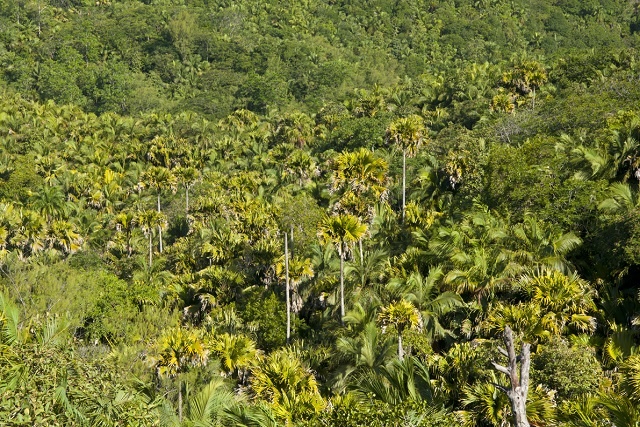Seychelles to gather updated information on forests through new national inventory

Seychelles has 45,500 hectares of land and it is estimated that the forest area is 40,600 hectares. (Gerard Larose)
(Seychelles News Agency) - The Seychelles will be embarking on a new project to provide accurate and updated information on the status of the island nation’s forests, including data on endemic and native species.
The project will be done through a national forest inventory which will be implemented by the Ministry of Environment, Energy and Climate Change with technical support from the Food and Agriculture Organisation (FAO).
John Quilindo, from the forestry section of the ministry, said: “the integrated forest land and tree resources assessment at the national level will allow the country to produce the required information for policy and decision-making.”
Quilindo said the exercise which has started in April will also produce the necessary information which will allow Seychelles to comply with international reporting requirements such as the United Nations Framework Convention on Climate Change, Convention on Biological Diversity and Global Forest Resources Assessment.
The national forest inventory is long overdue, said Quilindo, as the last countrywide forest inventory in Seychelles - a group of islands in the western Indian Ocean - was conducted in 1993.
Twenty-five years later, Quilindo said, “this project aims to introduce a new, sound data-collection system in Seychelles, including all the new information requirements, and will improve transparency, consistency and providing international standards for reporting purposes.”
Jason Jacqueline, director of the Seychelles National Parks Authority which has the mandate to manage all forests classified as protected areas, said that the inventory which will be held over two years will provide much-needed information.
“Without the inventory we do not know what we are managing and how we are doing it. This is a big disadvantage for the country. This assessment will be one where the latest technology will be used. These will include remote sensing, satellite images and all these sophisticated equipment and tools can be linked directly to a computer and internet. This will make it much easier for our staff to process information collected.”
FAO will train technicians and forestry officers in the new technology. Quilindo adds that “sustainable management of forest land and tree resources requires adequate and reliable information about extent and state of the existing resources and changes over time.”
Jacqueline said that with this “the authority hopes to get information about endemics such as the thief palm or latanier palm which due to its economic value there is fear that it might be overexploited.”
“In reality, all our forests need an inventory as this will assist us to know what resources we have, where they are located as well as their quantity," Jacqueline said.
The National Parks Authority has forestry offices on the three main islands of Mahe, Praslin and La Digue. Jacqueline said that staff at its offices will benefit greatly from the exercise as they will know what kind of information to collect on each different site.
Seychelles has 45,500 hectares of land. It is estimated that the forest area is 40,600 hectares or 90 percent of the nation's land. About 90 percent of the forests are natural plantations. More than 45 percent of the forests are within national parks or other conservation areas.
The main island of Mahé, in particular, had exceptional hardwood forests of bwa nat, bwann fer, bwa gayak which are now protected but were traditionally used in construction. Bwa gayak was highly utilised for building boats.
Other valuable timbers include Capuscin and Bwa rouz, popular for carpentry. Santol and Mahogany are introduced species but equally have important timber value.
The vegetation of Seychelles is extremely valuable from the conservation perspective as 35 percent of species are endemic.





